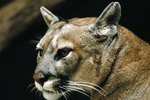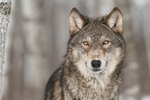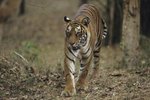
In the feline world, the tiger reigns as the largest of cats. There are currently only five of the original nine subspecies of tigers remaining in the wild today. The Sumatran tiger is the smallest of these subspecies, and the superlative honor of the largest is conferred to Russia’s Siberian tiger, also known as the Amur tiger.
The Heavyweight Cats
If you have ever fantasized about a tiger purring away on your lap on a cold winter’s evening, this figure will be sobering as you ponder the consequence of being squashed. As the largest of the tigers, the average weight for an adult Siberian tiger is approximately 660 pounds. A male Siberian tiger can weigh in as high as 423 kilograms, or 933 pounds. Females, although considerably lighter, can tip the scales at 168 kilograms, or 370 pounds. That is a massive jump from the 1.7 to 3.5-pound weight of a newborn Siberian tiger cub.
Long and Lean
Despite the aforementioned numbers, tigers are long and lean. The average head and body length of an adult Siberian tiger is approximately 10.75 feet. The adult male tiger’s lithe body can measure as long as 3.7 meters, or 12 feet. Female Siberian tigers grow to 2.4 meters, or nearly 8 feet, in length. The tail length of ranges between two and three feet, and the tiger stands roughly 3.5 feet tall at the shoulder. For comparison, the Sumatran tiger is just over half of the size of the average Siberian tiger.
Athletic Build and Appetite
Tigers are muscular powerhouses that are built for hunting. Their huge forelimbs, athletic necks and broad shoulders provide the muscle mass and strength to fight and drag prey weighing up to nearly twice the tiger’s size. A tiger’s voracious appetite craves such prey as water buffalo, leopards, bears, antelopes, wild boar, monkeys, hares and deer. An average meal from a successful hunt provides these hungry predators with 40 to 90 pounds of meat to maintain their massive girth. Mothers must increase their kill rate by up to 50 percent in order to support the nutritional needs of herself and her young, growing cubs.
Size Makes No Difference
The Siberian tiger may be the largest of the wild cats, with powerful features and a formidable hunting prowess, but his population has fallen victim to the hunting quests of man. Today, there are less than 500 of these beautiful cats remaining in the wild. Black market fur trade of their pelts and the use of their body parts in eastern medicinal preparations are primarily to blame. Land development by man has also contributed to extensive habitat loss and a decrease in the prey that also roamed the tiger’s domain. Although protection programs have been instituted and poaching incidents have reduced, it continues to pose a threat to the survival of all of the world’s remaining tiger subspecies.
References
Photo Credits
-
Jupiterimages/Photos.com/Getty Images




